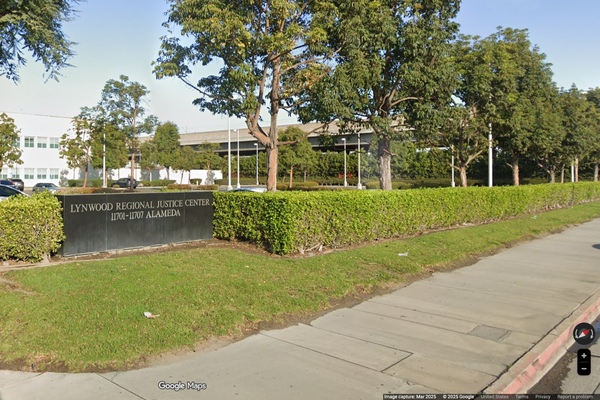
Recent research has uncovered the isolation felt by the sixth of New Zealanders who live with chronic pain – sometimes made worse when even doctors do not believe patients
A limited public understanding of the invisible menace of chronic pain creates isolating stigma that could in turn exacerbate suffering, according to new research from Auckland University of Technology.
Research author Dr Debbie Bean says that for the 770,000 New Zealanders who live with chronic pain, medical interventions need to address the stigma they face.
Alongside postgraduate psychology student Amber Dryland, Bean surveyed more than 200 chronic pain sufferers and found greater stigma was associated with higher disability, depression, social isolation and less social support.
“We found that basically stigma makes peoples lives a lot worse,” she says. “Because pain is invisible, it is often disbelieved and attributed to mental illness, or viewed as imaginary and ‘all in your head’.”
The study showed stigma can come from a range of sources, be it self-applied and internalised thoughts of inadequacy or discrimination from people or institutions.
More than anything, the study shows how chronic pain suffers carry an invisible burden, preventing them from receiving the sympathies or supports in stock for people with some other conditions.
“Though I live every day in pain, the world sees a fit and healthy 29-year-old man and expects me to behave as such,” one respondent said. “I feel the frustration of going through life with an invisible handicap.”
Bean says much of the stigma ultimately stems from people’s lack of understanding about pain.
“It’s a condition that affects nearly one in five people in New Zealand, yet people don’t understand it and you don’t hear much about it,” she says.
She says one way to address the stigma could be to educate people about the biomedical underpinnings of pain. Without easy empirical measurement, with many doctors simply asking patients to rate their pain out of 10, it can be seen as an abstract or subjective experience.
Pain is something everyone has experienced - but the nature of individual conscious experience means we cannot know exactly what it’s like to feel the pain of another.
But Bean says there are clear biomedical processes at work when a person is in pain, and general public understanding of this would help to make the experience go less unseen or unfelt by others.
“The fact is that chronic pain is very common and a very real condition in its own right,” she says. “People with chronic pain are not making up their pain. I don’t think the public are that interested in learning the neurophysiological processes that underpin pain, but for people to understand it, maybe they need to.”
The abstract and ubiquitous nature of painful sensation could go against the human tendency to put things in one box or another. Bean says pain being a psychological and a biomedical process means as a field of study and a human experience can complicate things.
“It challenges our whole view that things are one or the other, as it’s so strongly influenced by both,” she says.

And while pain itself is a universal human experience, chronic pain is not felt equitably across the New Zealand population.
David Rice, president of the New Zealand Pain Society, laid out some of the patterns of distribution for sufferers of chronic pain.
It’s experienced more by Māori, more by women, more by the old and more by people from lower socio-economic backgrounds.
Bean says some of these discrepancies have correlative markers that can be teased out easily enough.
‘Education for health professionals has been shown to reduce mental health stigma, and the same may be true for chronic pain’ – Dr Debbie Bean
“We all hurt more as we get older,” she says, and lower socio-economic conditions may mean less access to healthcare and a tendency towards jobs requiring potentially injurious physical labour.
And with an ageing population and tough economic times, it could mean the population is now more at risk.
The study was conducted through the AUT Health and Rehabilitation Research Institute and the Pain Management Unit at Te Whatu Ora Waitematā, and was a first in taking multiple determinants and effects of chronic pain into account at once.
Bean says this means the results can inform a comprehensive and integrated model of the stigma that will hopefully aid future research and interventions.
And it’s not just the public that are the source of the stigma. Health professionals were singled out in the responses as sometimes having inconsistent responses to complaints of pain.
“While opioids are not recommended for treatment of non-cancer pain, they are frequently prescribed despite the guidelines,” she says. “Inconsistent prescribing can create misunderstandings. If a clinician declines to prescribe opioids, this could be misinterpreted as disbelief of pain and patients may feel accused of drug-seeking, even when the clinician understands that the pain is real.”
She says the answer is to make sure medical education readies doctors and nurses to communicate with patients about opioid use.
“Education for health professionals has been shown to reduce mental health stigma, and the same may be true for chronic pain,” she says.
Doctor disbelief was noted in the responses from chronic pain sufferers, with one 50-year-old woman with widespread pain saying, “I've had X-rays before but nothing was detected so the doctor didn't think I was really in so much pain”.
A 46-year old man said he felt his GP didn’t believe him about his hand pain, and a 30-year-old woman with neck pain said medical professionals kept putting it down to stress or mental health problems.
Another common situation depicted in the results was sufferers hiding what they were going through from people around them.
“I hide it well,” said a 49-year-old man with back pain.
Respondents described hiding their pain leading to weakening relationships with others and social isolation.
“I have a very small circle of people around me that I trust, and everyone outside of that either gets very little interaction with me on a deeper level or gets 'brave face' me,” said a 27-year-old woman who has bladder pain. “There are very few people in my life that I can be my real self around, and that makes me sad.”
But the experience of stigma was also a nuanced spectrum, like the pain itself. Some people reported no stigma, while others reported it widespread across many areas of their lives.







